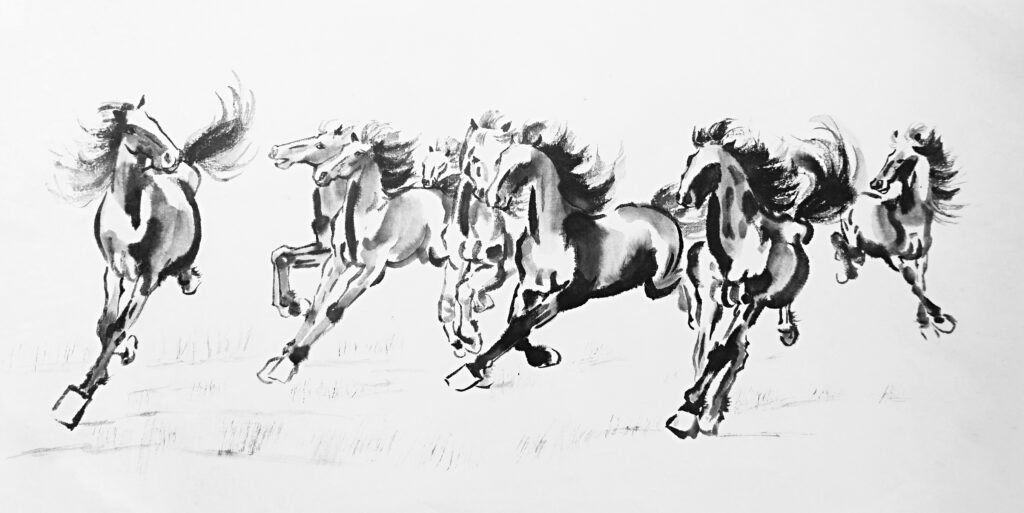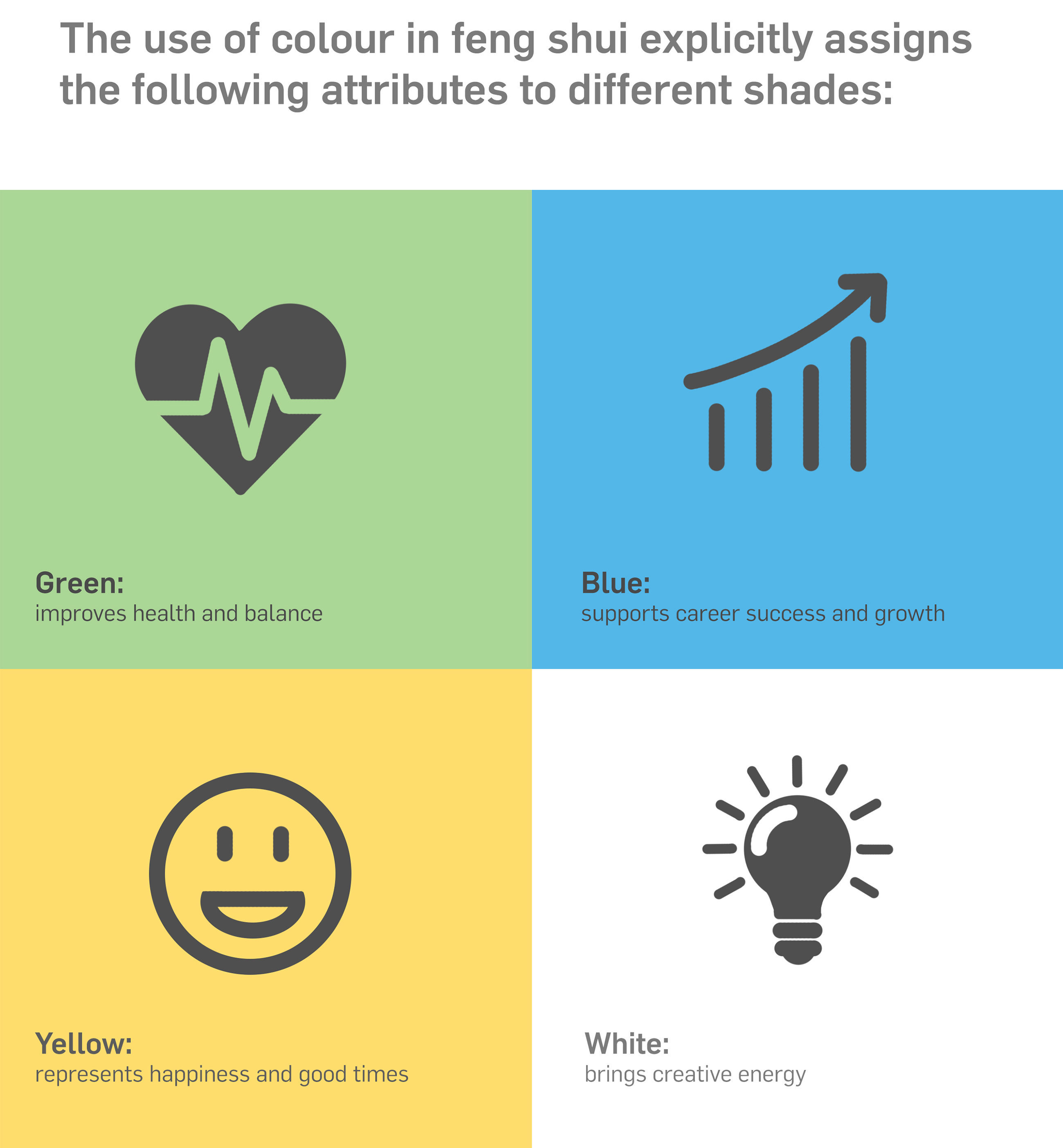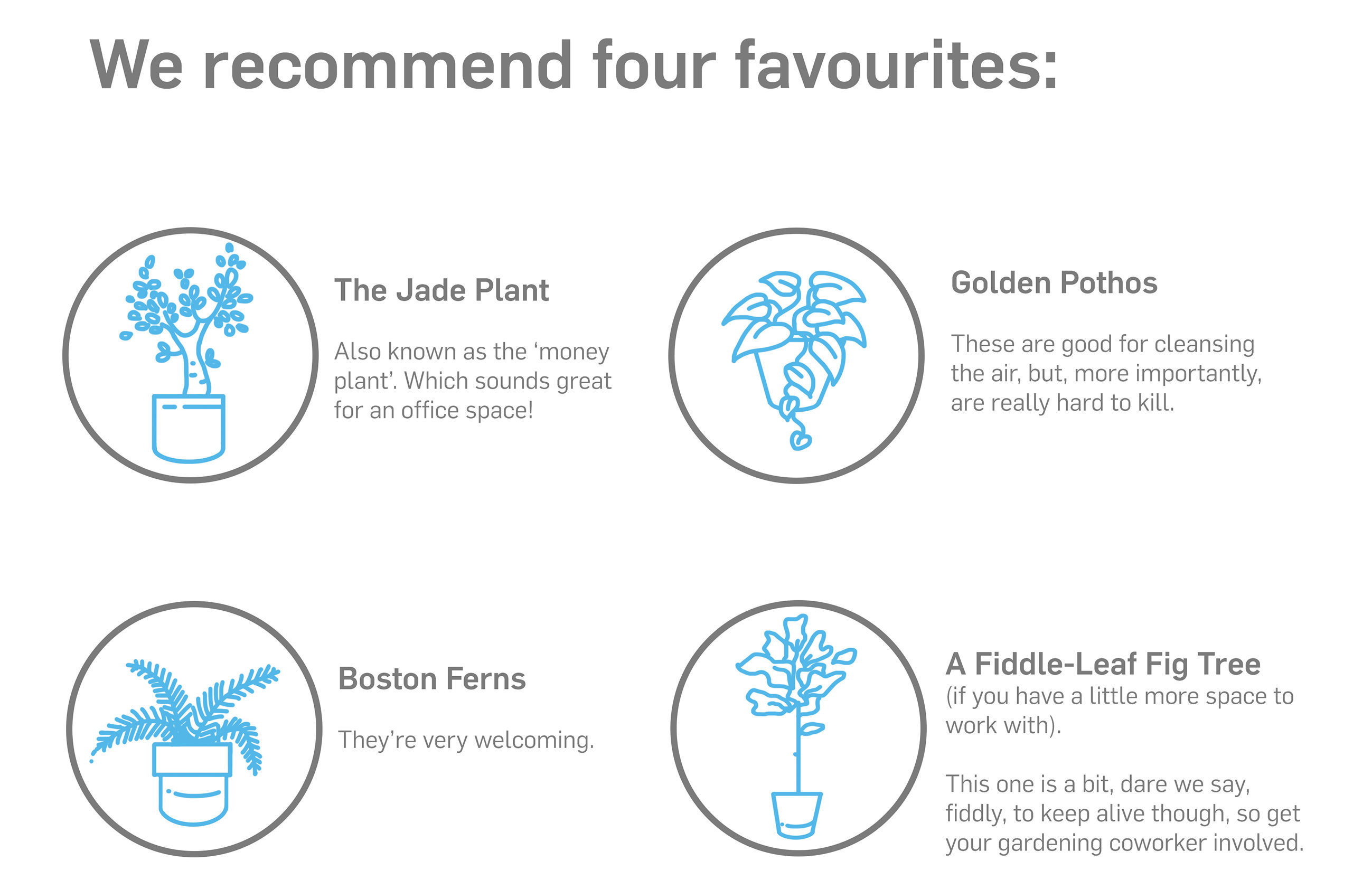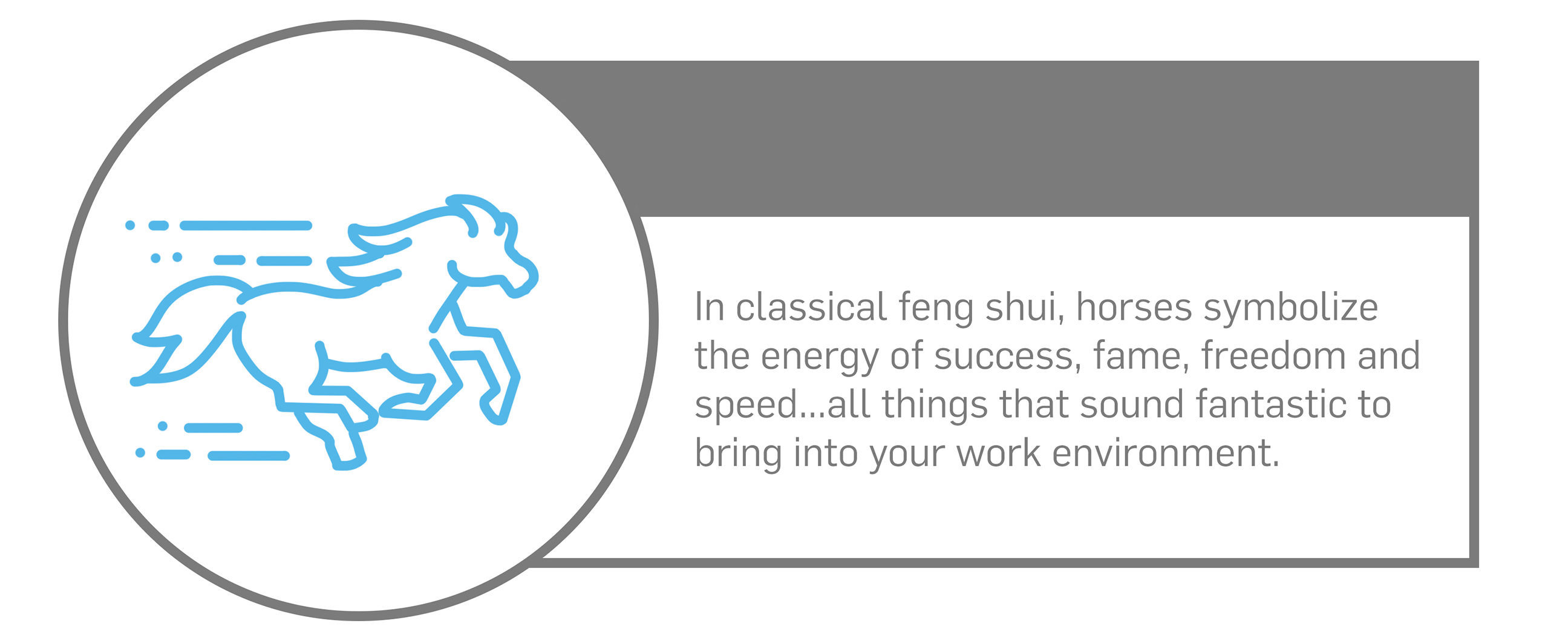This is Feng Shui: 4 valuable tips to guarantee harmony in the office
Today we look at how the interior environment of your office or workspace can affect how you feel, and how productive your working day is. One thing is clear: interior design has the power to change your day, regardless of whether you adhere to Feng Shui principles or not.
Turning to an esoteric Chinese tradition might not be the first thing you think of when you want to improve your work environment, but hear us out. We’re talking about feng shui, specifically what you can do with it to bring harmony to your office design – and perhaps even increase your business successes.
What is Feng Shui in office design?
As a traditional Chinese practice that is meant to use interior design and decorative accessories to bring about improvement in people’s lives, the very idea of feng shui is something that we completely ‘get’ over here in FibreGuard.
Making your décor work for you? Yes, please.
Applying feng shui principles to office spaces is just the same as for your home, except that with office spaces you probably don’t have much say about rearranging them or what kinds of lighting are used (among other things).
You’re probably thinking…come on, FibreGuard, there’s no way this pseudoscience can make me more productive. To the sceptics, we answer: why not try it out anyway? You have nothing to lose, and at the end of it, your desk or cubicle will look much better as a result.
Can Feng Shui make you more productive at work? Follow our tips: working in a harmonious environment full of positive vibes can’t be bad for your efficiency, creativity, or general wellbeing.
Feng Shui decor 101: the five guiding elements of design
Very simply, Feng Shui is guided by what practicioners see as the basic elements of life: fire, earth, metal, water, and wood. In Feng Shui, however, the 5 elements are more than just 'wood' or 'water': they each contain an energetic essence that can be harnessed to create harmony within one’s environment.
These elements are powerful energetic forces, each with a distinct 'chi' flavour. The concept of “chi” is often associated with 'energy'. This concept surrounds everything. Does a place or person make you feel energised, or drained?
- The Fire Element is expansive, spreading movement; transformative and changeable. It is warm/kind to hot/passionate in nature, and its shapes are triangular—reds and oranges being favored hues.
- The Earth Element is stable, grounding and nurturing. It lacks movement. Square or rectangular shapes that are in shades like burnt umber, brown sienna, tans and ochre represent this element best.
- The Wood Element is associated with an image of growth and expansion. Its colors are greens from olive to emerald, blues in a wide variety of shades from eggshell to and teal—colors that suggest strong vitality and new beginnings.
- The Water Element has a deep, still energy. It is wise—but also flowing and connected. The water element brings clarity and wisdom, with an undulating formless quality to it. Key colors are black; subdued almost sooty gray; ink blue and navy.
- The final element of Feng Shui is the Element of Metal and it embodies a rigid, righteous, overly correct kind of energy. It's generally represented in design through circular shapes and spherical forms, in colours ranging from titanium white to metallic shades of all kinds and lustres, to pale shades like pearly grey and a milky, cerulean blue.


Office decor Feng Shui 1: spark joy
Flare-up that feel-good factor in your workspace by inviting dynamic energy in. The layout of your office is always something that can be turned to your advantage, whether you feel like you have control over how it looks or not. You actually don’t even need a whole office at your disposal to give it the feng shui treatment – even a cubicle in a call centre can be made to work for you.
The whole idea is to create and keep good energy in your space.
Related read: Wabi-sabi: the stress-free design style we'll always need >
If this sounds a bit too ‘woo woo’ for you, here’s our practical tip to soothe your raised hackles: work with decorative accessories that you like.
What do you have at home that makes you feel calmer? Add it into your workspace. It can be a framed photograph of loved ones, your favourite mug, a coaster made by a family member…anything at all specific to you that makes you feel rested.
That being said, take note of our next tip and don’t overload your workspace.
Feng Shui for career success 2: cut the junk
Decluttering is a definite 'yes', but it doesn't have to mean 'everything must go'. When you’re deciding how to best decorate your office, be selective. Use decorative elements that spark off happy memories or items that are meaningful to you. Do you have a go-to quote that never fails to ignite your creativity? Stick it up on the corkboard.
Clutter, however, is something else entirely.
Related read: Organise, style, and design your interiors to do your best remote work >
We’re not telling you to introduce a load of clutter into your space. Clutter just doesn’t help productivity at all. Decluttering will give you more room and wipe away visual stress at the same time. Please note we’re not telling you to get rid of everything! Just be reasonable about it. If it works, keep it, and if it is stressing you out or useless, bin it.
You don’t really 3 pen cases and need 160 pens, do you?
Related read for the clutter magnets among us: How to go maximalist in your interior design - without the clutter >

Feng Shui for workspace interiors 3: colour colour colour
Carefully chosen colour palettes can help your office design out immensely.
We write about colour a good bit here on the FibreGuard blog (check this out!), and for good reason: different colour schemes bring different energies to a space.
Colours, as you might have guessed, affect emotions and mood, just as much as access to natural light, or as much as how much water you’re drinking (note: drink more water).
Related read: Productivity, remote work, and the psychology of colour
There’s a science behind the colour paints used in offices that you can harness when decorating with the principles of feng shui in mind.
The use of colour in feng shui explicitly assigns different attributes to different shades.
Obviously, unless you’re working from home, you really don’t have carte blanche to go repainting the office or co-working space. So, think small. Change the colours of things on your desk.
Change your desktop wallpaper. If you have a corkboard or divider space, use it to your advantage and pin up a mood board. Pro feng shui advice: Get a better chair – one with a high back to give you more support and put you in charge.
Related read: Colour inspiration: an autumn of zen colours >

The 3 things FibreGuard's social media audience love the most
Office plants and Feng Shui: this is tip 4
Plants and general greenery in your workspace help reconnect you with nature. Working at the same desk every day, in the same room, facing the same direction without fresh air or without even a view outside…these are the things that really make you feel cramped, unproductive, and creatively stifled.
Bringing in plants will help if you can’t look outside during the workday or even face a window.
Add plants that improve the overall look and feel of your workspace, and make sure to take care of them: dead and dying plants are a haven for bad energy – kind of what we’d call bad feng shui.
If you were to go big into feng shui principles, you’d see that east, southeast, and south areas of an interior space are excellent feng shui areas to decorate with plants.
Related read: Rewilding: principles and history of this megatrend >
Why are they excellent?
Because plants in these positions help to infuse the space with a vibrant, dynamic energy (apparently).Get out that compass app on your smartphone, find out where these directions are, and put plants in them. Simple.
We hope you’ve found this article useful and are already hunting for the compass app as you read this.
Related read: How office design is responding to the changing needs of employees >
Bonus Feng Shui office design tip!
Get a little horse figurine and put it on your desk. In ancient China, horses were associated with the dragon and held in high esteem for their strong representative of yang energy. Yang is fast, bright and active while yin has slower, more passive properties.

It matters what your figuring is doing, depending on the kind of energy you want to attract into your work life: the galloping horse represents speed and success, while a steed standing solidly on all four feet exudes a strong, powerful energy.

Eight horses recur frequently as an artistic motif in feng shui decoration. This artwork actually has a name of it’s own called ba jun tu (八骏图) which can be loosely translated to 8 steeds picture. Each horse has a separate character and symbolism of its own.
We recommend using the compass on your phone, finding the south (your fame/reputation area) or north (your career and life path area) positions of your desk or office layout, and putting a little horse figure or image in one of those places depending on what you want an energy boost in.
Harness the subtle power hiding in interior design decisions
Interior design has the power to change your day, regardless of whether you adhere to Feng Shui principles or not. The environment of your office or workspace can affect how you feel and how productive your working day is.
By balancing the five elements of feng shui, maybe you really can achieve harmony in your world, which in turn will lead to greater job satisfaction and better career performance. At the very least your workspace will be visually interesting!
FibreGuard fabrics give all interiors an energy boost
No matter your workspace decor style, or professional working style for that matter, feeling comfortable to be your best self is the bottom line. Thankfully, we're experts in creating comfortable spaces thanks to our stain-resistant fabrics. FibreGuard's furnishing fabrics are available in a wide variety of fabric designs and characteristics, so there's something for everyone. Get in touch with us today for stockist information.